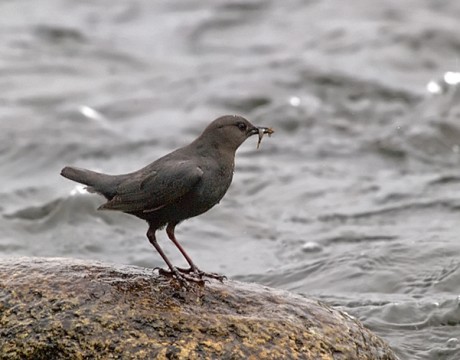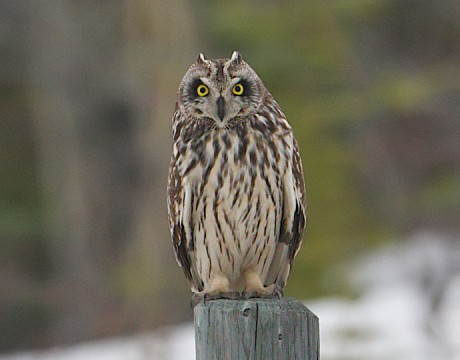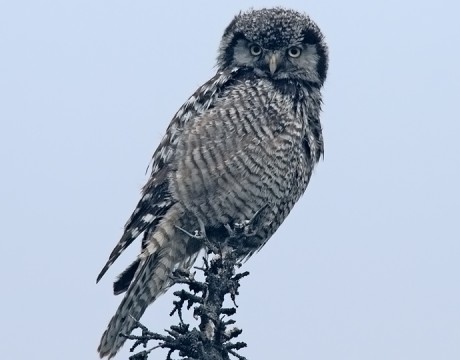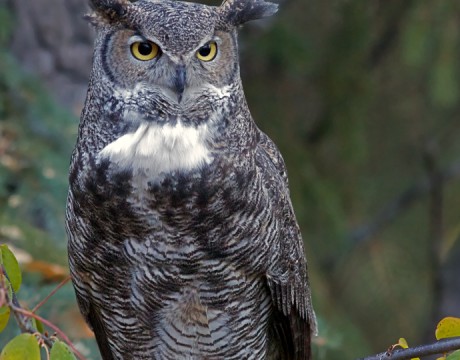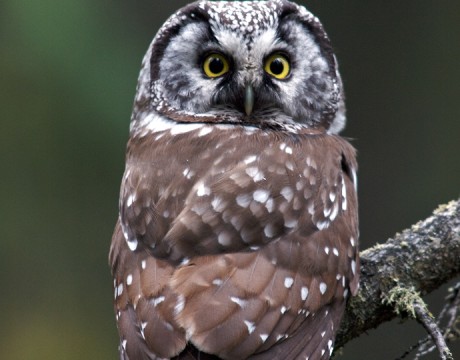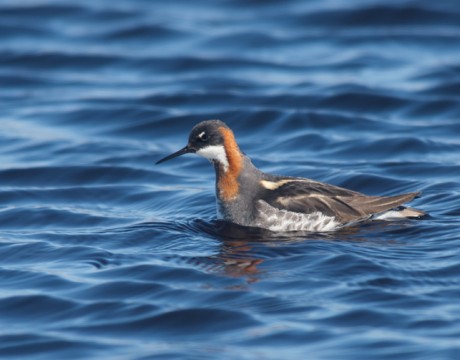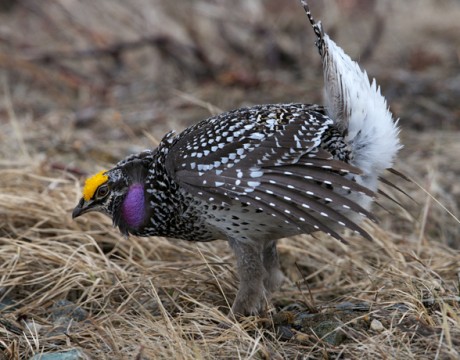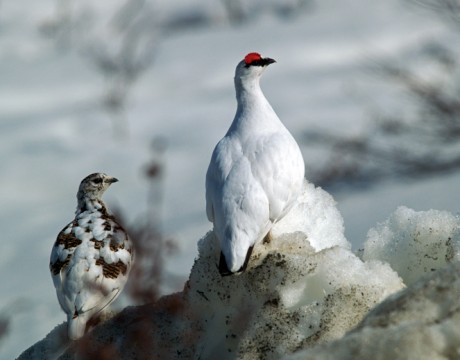Bird of the Week – American Dipper
When folks think about birds that winter in Alaska during the long, dark winter, they often forget one species. The American Dipper, a bird that spends a big chunk of its life under water, stays in Alaska all winter. Dippers forage by walking and swimming in shallow, fast streams, catching fish and invertebrates. It survives by staying in the air pockets under river ice, where the temperature is a relatively mild 32 degrees. In the summer, you’ll see the bird along fast-flowing streams, doing its namesake dipping movement. The old name for Dippers was Water Ouzel, a name that calls…
Bird of the Week – Great Grey Owl
The largest, but not the heaviest, owl in North America is the Great Grey, an owl of the boreal forest. Even more than other owls, a Great Grey is mostly feathers. This particular bird is an educational bird some of you may recognize. Earl – that’s right, Earl Grey – lives with WC and Mrs. WC. You mean you don’t have mice thawing in your refrigerator? At 27 inches tall, with the distinct “bow tie” around the neck, this is one of the easiest birds to identify if you are lucky enough to see one in the field. Or in…
Bird of the Week – Short-eared Owl
Short-eared Owls don’t usually breed in Interior Alaska, although there was an active nest along the Denali Highway a few years ago. They mostly breed on the north side of the Brooks Range and the North Slope, but pass through here in spring migration. The “ears,” like the “horns” on a Great Horned Owl, are feather tufts. They are “short” in relation to the tufts on its non-Alaska cousin, the Long-eared Owl. Short-eared Owls are among the most widely distributed owls in the Western Hemisphere. WC has seen them in Hawaii, in the Galapagos Islands, on Tierra del Fuego at…
Bird of the Week – Northern Hawk Owl
Another Alaskan owl, now much harder to find, is the Northern Hawk Owl. The Hawk Owl has the longest tail among North American owls. The black border around the white facial disk is also a great field mark. Like the Boreal Owl, the Northern Hawk Owl is a plunge dive feeder, and is suffering from the unseasonable mid-winter rain storms, which make it impossible for them to punch through the snow to the prey below. Last year WC saw exactly one Hawk Owl. For more bird photos, please visit Frozen Feather Images.
Bird of the Week – Great Horned Owl
By far the most common owl in mainland Alaska is the Great Horned Owl. This pretty lady came to visit the WC household when we were hosting Gus, Bird TLC’s Great-horned. Gus was in an outdoor mew, and attracted this girl. It was certainly the most convenient bird photo WC has gotten: from his deck, in his bathrobe, with a cup of coffee at hand. For more bird photos, please visit Frozen Feather Images.
Bird of the Week – Boreal Owl
Mrs. WC is somewhat famously “the owl lady.” We have three educational owls living with us, which is why there are mice thawing in our refrigerator at this very minute. But this is a wild owl, a male Boreal Owl, photographed in Fairbanks a few years ago. WC was trying to photograph the female, who was on eggs in an owl box, waiting for her to stick her head out. Instead, this handsome little devil flew out. Great, WC thought to himself, you’ve put the female off of her eggs. But when WC looked back at the box, she was…
Bird of the Week – Red-necked Phalarope
The most common Phalarope in Alaska is the Red-necked. Like the Wilson’s Phalarope, the sexual roles are reversed. The female is more colorful and territorial; the male is drabber, broods the eggs and stays with the chicks. All phalarope feeding behavior is very distinctive: the birds swim in fast, tight circles, like some kind of wind-up toy, to lift insects and other invertebrates near the surface. This bird was photographed near Chevak, on the Yukon River Delta in 2008. For more bird photos, please visit Frozen Feather Images.
Bird of the Week – Wilson’s Phalarope
There are three species of Phalaropes in Alaska; this one, by a considerable margin, is the least common. Phalaropes are unusual in that sexual roles are reversed; the male is drabber, and does all of the brooding of the eggs and raises the chicks. The more colorful female lays the eggs and leaves. This proto-feminist male was photographed at Creamer’s Refuge in 2008. For more bird photos, visit Frozen Feather Images.
Bird of the Week – Sharp-tailed Grouse
The very first Bird of the Week posted here was a Sharp-tailed Grouse, but since we’ve been looking at Alaska’s grouse species the last few weeks, here’s another photo of a male Sharp-tailed Grouse lekking – competing with other males for the attention of a female: The sound effects are pretty impressive, too. The dancing behavior, technically “lekking,” is done in the early morning before the raptors are out and flying around. Which is just as well, because the males aren’t focused on anything but the display and the ladies. WC admits the composition of this photo leaves a lot…
Bird of the Week – Rock Ptarmigan
We’ll close out this chicken series with one of the high altitude species in this family. Rock Ptarmigan are a close cousin of Willow Ptarmigan, but tend to be found at higher elevations. The black line from the bill through the eye is the surest way to tell the male Rock Ptarmigan from the male Willow Ptarmigan. The female molts sooner than the male; she will be hunkered down on eggs as soon as the snow is gone, relying on camouflage to conceal her and the eggs. This was one of the first photos WC took with a serious digital…





